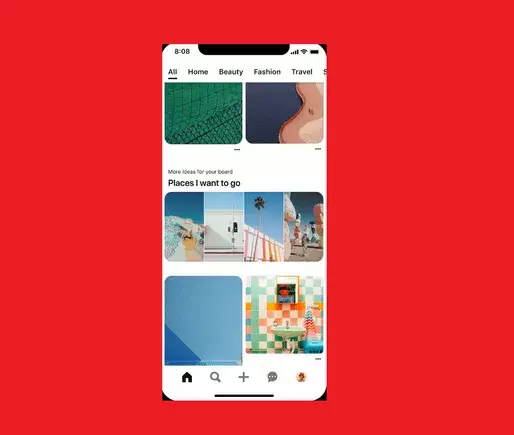In the ever-evolving landscape of social media, platforms must relentlessly innovate to retain user interest and engagement. Pinterest, an image-sharing site that doubles as a social network and a search engine, has recently unrolled intriguing new modules that have surfaced prominently in user feeds. These full-width modules are not just visually striking; they signal a strategic shift toward enhancing user engagement through diversified content offering.
Pinterest’s latest enhancements stem from a desire to create a more interactive experience. By introducing distinctive module types, Pinterest intends to inspire users to delve deeper into related ideas and content. This deliberate maneuver is designed to capture users’ attention in increasingly creative ways while gently guiding them towards discovering new, relevant pins.
Understanding Pinterest’s New Module Types
At the heart of this innovation are two core module types: Landing Page Modules and Carousel Modules. The Landing Page Modules present an engaging gateway that directs users to a dedicated space filled with curated pins. This format fosters a deeper exploration of specific themes, enabling users to engage with thoroughly categorized content in an organized manner.
On the other hand, Carousel Modules aggregate multiple pins within a horizontal display that users can swipe through. This interactive element not only catches the eye but also enriches users’ experience, potentially increasing the time spent on the platform. By implementing these two creative structures, Pinterest aims to broaden users’ exposure to creative ideas and inspiration, enhancing the overall context in which they interact with pins.
Smart Personalization: Adapting to User Engagement
One of the most commendable aspects of Pinterest’s module strategy lies in its sophisticated responsiveness to user behavior. The platform has crafted an intelligent system that carefully monitors engagement patterns to curate a personalized experience. Modules are selectively displayed based on users’ historical interactions and interests, ensuring that only the most relevant content reaches each individual.
This level of personalization is music to marketers’ ears. Understanding user engagement metrics becomes crucial for brands hoping to optimize their content strategy on Pinterest. If a user shows little interest in a specific module, Pinterest’s algorithm will defer showing that module for a designated period. This “intelligent exclusion” mechanism not only prioritizes user satisfaction but also protects valuable ad space from becoming stale or repetitive.
The Strategic Importance of Dynamic Content Display
Previously, Pinterest had adopted a more static approach wherein modules were fixed slots in the feed. This could lead to a disconnect between engaging pins and the new modules, potentially diminishing user interaction. The new “skip slot” approach dynamically integrates modules within the user feed only when their predicted engagement rates are higher than that of surrounding pins. This not only optimizes visibility for high-potential content but also ensures that users’ journeys remain fluid and engaging.
By fostering a more harmonious interplay of modules and pins, Pinterest has enhanced its user interface while simultaneously elevating the chances of engagement with fresh content. Marketers are eagerly watching this transformation, as it presents an opportunity to produce well-timed and contextually relevant content that feeds into Pinterest’s evolving algorithm.
Implications for Marketers and Content Creators
For marketers, the implications of such strategic innovations are profound. The introduction of these new modules provides a golden opportunity to capture a broader audience and foster deeper interactions. Understanding how these modules function and their impact on user engagement will be paramount for brands aiming to craft tailored strategies that resonate with their target demographics.
The addition of Landing Page and Carousel Modules allows marketers to think outside the box and create visually captivating, targeted content that can significantly uplift their Pinterest strategy. By leveraging the power of embedded multimedia content and engaging narratives, brands can utilize these new opportunities to stand out in the vast sea of ideas that Pinterest represents.
Consequently, as Pinterest continues to blur the lines between social media and e-commerce, it stands poised to become an even more crucial player in digital marketing spaces, particularly for visual-centric brands. The new module strategy marks a potential transformative phase, encouraging deeper engagement and fostering community interactions on the platform. It’s a shift that both users and marketers should watch closely as Pinterest carves its path forward in an increasingly competitive social media sphere.


Leave a Reply